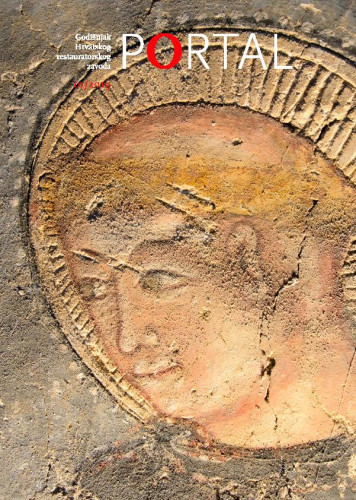Svaki zahvat koji mijenja ili uklanja dio izvornika neizbježno je diskutabilan, a među takvima svakako posebno mjesto zauzima metoda transfera. Ovaj tekst, uz kratki uvod u tehniku i povijest nastanka te metode, bavi se okolnostima koje su u recentnoj restauraciji dovele do izbora upravo takvog zahvata na vrijednoj umjetnini iz programa Hrvatskog restauratorskog zavoda. Slike Sv. Ivan Krstitelj i sv. Blaž sa sv. Katarinom i Sv. Nikola i sv. Antun opat sa sv. Dominikom Kristofora Krile Antunovića dijelovi su cjeline glavnog oltara Uznesenja Bogorodice u crkvi sv. Marije od Pakljene na Šipanu. Postupak o kojem je riječ izveden je na slikama 2016. godine. Detaljno je predstavljen tijek radova, posebno mjere i odluke donesene na temelju razmatranja i procjene stanja umjetnine te učinkovitosti prethodno izvedenih postupaka. Uz to su razmotreni i razlozi odabira pojedinih suvremenih materijala i tehnika, a u zaključnom dijelu teksta razmatra se odražavanje iskustva obavljenog zahvata na vrednovanje primijenjene metode.; Any intervention that changes or removes part of the original is inevitably debatable, and the transfer method certainly holds a special place among such interventions. This text, with a brief introduction about the technique and history of its origin, deals with the circumstances that have led us, in recent restoration practices, to carry out just such a process on a valuable artwork from the Croatian Conservation Institute. Transferring a painting from the original support to a new one is one of the most complex and dangerous restoration procedures for structural changes of paintings. It is a radical and irreversible method that significantly affects the integrity of the material, as well as the aesthetic characteristics of the work of art. In the past, many paintings were transferred from wood to canvas, which was considered more stable and practical, thus changing the original technological concept and characteristic curvature of the surface of paintings on wood. Depending on how much of the original wood is removed, the process can be characterized as a complete or partial transfer. In the latter case, a thin layer of wood (a few millimetres) is retained, while in the case of a complete transfer, the entire support is removed to the chalk carrier. In addition to rapidly accelerating technological development, the past century has also brought a more restrained approach to restoration, reflected in the introduction of minimalist chalk into the ethics of the restoration profession. Today, a process whose legitimacy was not questioned for nearly two centuries is relatively controversial and is generally considered justified only in exceptional cases. The complete transfer was performed in 2016 on paintings of St. John the Baptist, St. Blaise with St. Catherine, and St. Nicholas and St. Anthony the Abbot with St. Dominic, by Kristofor Krile Antunović, from the high altar of the Assumption of the Virgin in the church of St. Mary in Pakljena, on Šipan.
Sažetak

 Portal : godišnjak Hrvatskog restauratorskog zavoda : 10(2019) / glavna urednica Ksenija Škarić.
Portal : godišnjak Hrvatskog restauratorskog zavoda : 10(2019) / glavna urednica Ksenija Škarić.